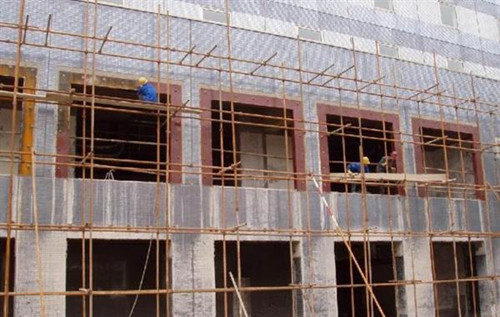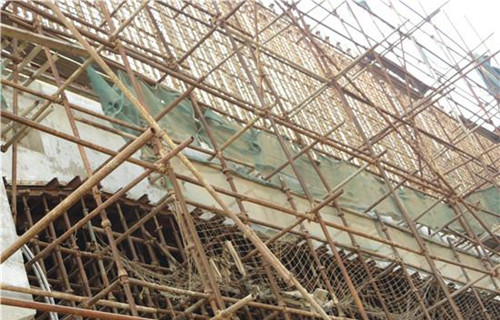The transformation and reinforcement of houses means that within the life span of the existing buildings, based on the scientific testing and appraisal basis, reasonable repair and reinforcement measures are taken, or through structural transformation, so as to improve the safety and durability of the structure and meet the normality of the buildings. Use functions to ensure building energy conservation and environmental protection, and extend the safety life of buildings. Next, Xiao Bian will introduce the materials for the transformation and reinforcement of houses and the methods for the transformation and reinforcement of houses.

House reconstruction reinforcement material
1, structural adhesive
Also known as structural adhesives, refers to adhesives used in load-bearing structures and components that can withstand long-term exposure to design stresses and environmental effects.
2, crack grouting material
A high flow, good plasticity infusion material. It is mainly used for concrete cracks and masonry cracks with a width of 1.5mm~5.0mm. It is changed to “slurry material†to show the difference from general grouting material because no coarse aggregate is used.
3, cement-based grouting material
A high flow, good plasticity infusion material. The grouting material used for the engineering structure shall have the physical characteristics of non-stratification, non-differentiation, minimal curing shrinkage, and stable volume, and have the binding performance and mechanical properties that meet the specified requirements.
4, polymer mortar
The mortar or cement mortar prepared from a modified material with a high molecular polymer as the reinforcing property is also called a compound mortar or a cement compound mortar. Generally, the main components of the polymer are divided into two categories, modified epoxy and modified acrylate copolymers.
4, fiber composites
Using a high-strength or high-modulus continuous fiber arranged in a regular and specially processed composite with a fiber-reinforced effect. Including carbon fiber composites, glass fiber composites and aramid fiber composites.

House reconstruction reinforcement method
1. Strengthen the section reinforcement method: This method has simple construction process, strong adaptability, and mature design and construction experience; it can be used for concrete reinforcement of beams, slabs, columns, walls and structures; but the operation time is long, It has a certain impact on life or production, and the reinforced buildings have a certain impact on the headroom.
2, concrete reinforcement method: This method is similar to the advantages of the increase cross-section method, but does not affect the gap after the reinforcement structure, and there is no shortcomings of construction wet operation time; suitable for low-strength concrete or reinforced concrete bearing member beam, Columns are seriously flawed.
3, outsourcing sticking steel reinforcement method: This method is also known as the wet layer reinforcement method, the construction is simple, the workload is small, but the larger the amount of steel, should not be used in the unprotected place for high temperature above 600 °C The location; applies to the size does not allow significant increase in the original member section size, but requires greatly improved bearing capacity of reinforced concrete structures.
4. Paste steel plate reinforcement method: rapid construction, on-the-spot non-wet operation or gypsum wet method operation, which has little impact on production and life, and there is no obvious influence on the gap of the original original structure, but the reinforcement effect depends to a large extent Adhesive technology and operating level; suitable for bending and tensile members that withstand static and normal humidity environments or rebars.
5. Wire-winding method: The advantages and disadvantages of this method are similar to those of the enlarged cross-section method, and are not suitable for the bearing capacity of a reinforced concrete structure with an oblique cross-section, or where it is necessary to generate a combination of lateral pressure-receiving members.
6. Bolt Anchor Method: This method is applicable to the transformation and reinforcement of concrete bearing structures with concrete strength class C20 ~ C60; it is not applicable to the above structures and light structures with severe weathering.
7, rust-proof rust-proof reinforcement method: It is mainly used for corrosion of steel or new buildings under the conditions of use of the old building, prevent and prevent steel rust bulging structure technology.
Editor's summary: The reform and reinforcement materials for the houses and the methods for the transformation and reinforcement of the houses are introduced here. I hope to help everyone. If you want to know more about yourself, you can follow the information on this site.
House Design Housing House Reform and Strengthening
In chemical reactions reactants can change the chemical reaction rate (increase or decrease) without changing the chemical equilibrium, and its own quality and chemical properties of the chemical reaction did not change before and after the catalyst called (solid catalyst also called catalyst). According to statistics, about 90% of the industrial process using catalysts, such as chemical, petrochemical, biochemical, environmental protection and so on. [1] A wide range of catalysts, according to the state can be divided into liquid catalyst and solid catalyst; according to the reaction system is divided into homogeneous phase homogeneous catalyst and heterogeneous catalyst, homogeneous catalyst with acid, alkali, soluble transition metal compounds and peroxides catalyst. Catalysts occupy an extremely important position in the modern chemical industry. For example, three catalysts, namely, an iron catalyst for ammonia production, a vanadium catalyst for sulfuric acid production, ethylene polymerization, and three synthetic materials such as butadiene rubber are used .
Catalysts And Auxiliaries,Trimethylamine Hydrochloride,Tetrapropylammonium Bromide,Benzyltri N-Butylammonium Chloride
SHANDONG ZHISHANG CHEMICAL CO.LTD , https://www.zhishangchemical.com